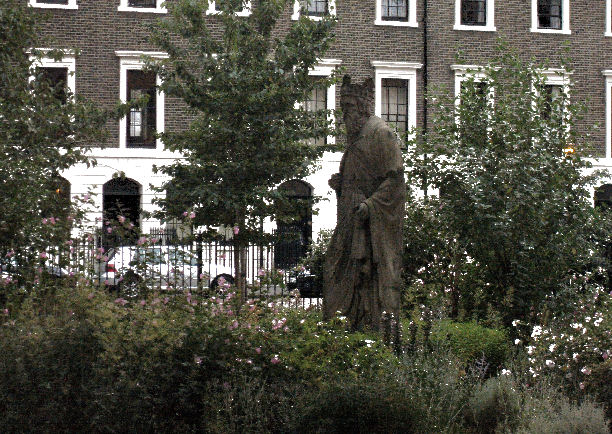The Dark Ages
After Emperor Honotius and the Roman army had left Britain it is known that Saxons had already settled on the coast of south-east England.
The
Anglo-Saxon Chronicle was written hundreds of years later and passed on down by oral tradition, tells of pitched battles with the Romano-British and
the Anglo-Saxon invaders. As far as London was concerned it was the gravel terraces of the River Wandle near modern-day Tooting that was first to be colonised. Tooting is a very old name and dates to about the fifth century.
Once the Saxons were established here great numbers of them followed so that by the eighth century most of the towns and villages that became Greater London had emerged.
There were different racial groups mainly Saxons and Jute's, the latter taking up land in Kent, with the East-Saxons in Essex, Middle-Saxons in Middlesex and the West-Saxon in Wessex.
London by this time had once again become an important place for trading and economy. Again favoured by the Saxons for its River Thames with easy places to cross and with the access to the North Sea. In the year 597, the Pope had dispatched Saint Augustine to convert the English at the invitation of Ethelbert, King of Kent, who had suggested that he made London the centre of the revitalised Church. It was from the warmth of his reception in Kent that Saint Augustine in his appreciation made Canterbury his headquarters.
One of his fellow missionaries, Saint Mellitus, was however entrusted with the conversion of the East-Saxons and almost certainly chose London for the centre of his missionary journeys, and possibly founded the first church in the city dedicated to Saint Paul on or near the spot where modern day
Saint Paul's now stands.
By the ninth century London was once again the capital city of England with the area inside the Roman walls was once again being occupied.
In the year 871, Alfred became King over a genuinely united England, with many villages in Greater London having Danish overlords.
The Treaty of Wedmore envisaged the partition of England between the Danes and the Saxons. Commonly it is said that the part ceded to the Danes, and it is now known to historians as the Danelaw, the effective boundary of London was the River Lea and the Thames estuary. So places like Tottenham and Enfield remained under Saxon rule, while places like Barking and Dagenham were ceded by the Danes.

King Alfred the oldest statue in London
King Alfred the Great's Statue in Trinity Church Square is the oldest outdoor statue in London and was once sited at Westminster. Brought here in 1823 when the church was erected and the square laid out, from the old Palace of Westminster, where it had, with other similar statues, being concealed by two taverns named 'Heaven' and 'Hell.' It probably dates from the time of Richard II. One of the hands has disappeared; they originally supported a book and a sword.
Under King Alfred, Londonís walls were rebuilt and new defences added. An effective force was recruited to man the walls and to act as a striking force in case of further trouble. King Alfred died in 901 and left behind him a country at peace. Alfredís capital had been Winchester, which was still the capital at the time of the Norman invasion in 1066, but London became during the tenth century undisputedly the most important city in the land as well as the wealthiest.
London Time

Follow Us
The contents of this website are the property of knowledgeoflondon.com and therefore must not be reproduced without permission. Every effort is made to ensure the details contained on this website are correct, however, we cannot accept responsibility for errors and omissions.
© Copyright 2004 -
Contact Us | Advertise